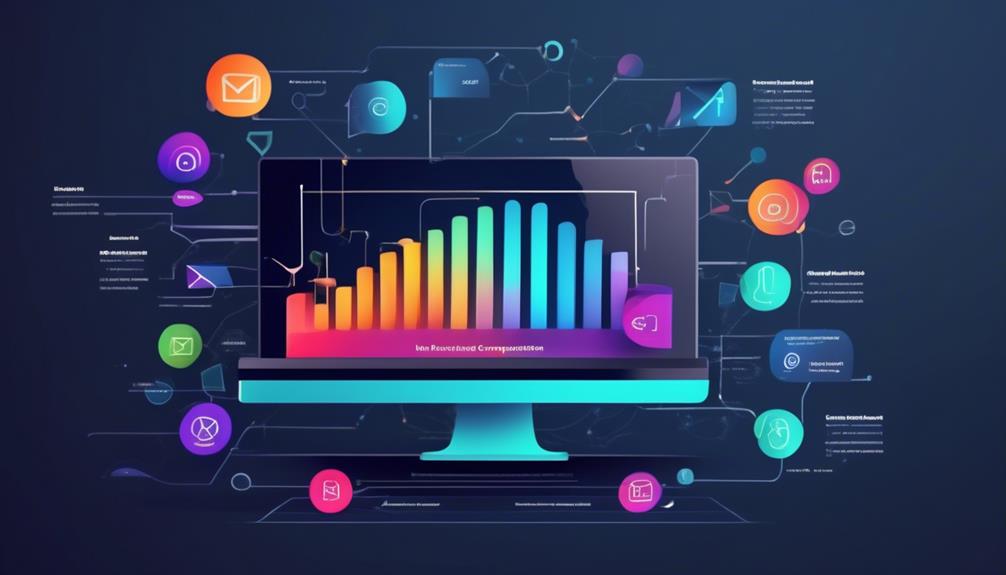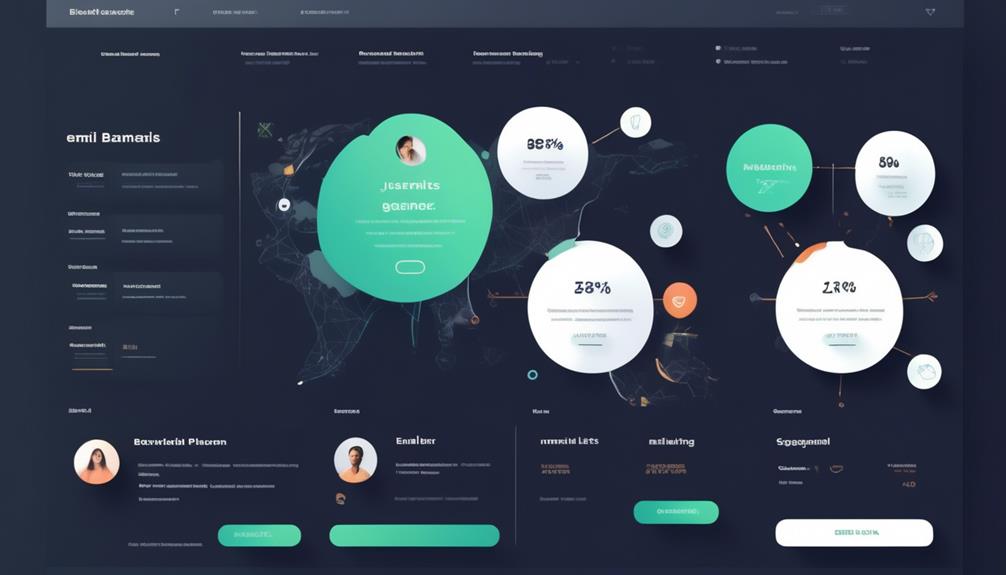Have you ever received an email that seemed tailored just for you? This isn’t a coincidence; it’s the power of behavioral email segmentation at work.
By understanding and utilizing customer data, businesses can create targeted segments that deliver personalized content to their subscribers.
But how do you ensure that your behavioral email segmentation is effective? In this discussion, we'll explore the four best practices that can help you maximize the impact of your segmented email campaigns.
From selecting the right tools to refining your strategy based on user preferences, these practices are essential for any company looking to improve their email marketing game.
Key Takeaways
- Choose a robust segmentation tool that integrates with existing email marketing platform
- Gradually expand segments as more data and insights are collected
- Incorporate customer data to create segments based on user behavior
- Regularly analyze and update segments based on data
Tool Selection for Segmentation
We recommend selecting a robust segmentation tool that seamlessly integrates with our existing email marketing platform to effectively target and engage our contacts based on their activity and e-commerce behaviors.
When considering a tool for email marketing segmentation, it's crucial to prioritize one that allows for the creation of targeted groups based on subscriber behaviors. Look for a tool that offers advanced segmentation options, enabling the creation of highly segmented email campaigns.
Additionally, the chosen tool should support email automation, facilitating the personalized delivery of content at scale. By utilizing behavioral and e-commerce data for segmentation, we can ensure that our email list segmentation is based on concrete actions and preferences, leading to more relevant and engaging content for our subscribers.
It's also important to consider a tool that enables dynamic content and personalization based on segmentation criteria.
Ultimately, the right segmentation tool, coupled with marketing automation, can significantly enhance the effectiveness of our email marketing efforts by delivering tailored content to the right audience segments.
Starting Small and Growing

As we embark on the journey of 'Starting Small and Growing', our initial focus should be on identifying two or three segments that have the most significant impact on our email marketing efforts, gradually expanding as we collect more data and insights. By starting small and creating specific segments, we can tailor our email content to better meet customer needs and preferences. This approach allows us to send different emails to various segments, ensuring that the content resonates with each group. As shown in the table below, starting with a few segments enables us to create more targeted and personalized content, leading to improved engagement and conversions. As we gather more data and insights, we can then expand and refine our segments, continuously optimizing our email marketing strategy.
| Segment Name | Description | Impact on Email Marketing |
|---|---|---|
| New Subscribers | Recently signed up for updates | Higher open rates and CTR |
| Inactive Customers | Haven't engaged in 3+ months | Re-engagement opportunities |
| VIP Customers | High-value and frequent buyers | Personalized offers |
User Preference Consideration
Considering user preferences in email segmentation enhances the relevance and impact of targeted marketing campaigns. By incorporating customer data such as frequency preferences and interactions at different stages of the customer lifecycle, we can create segments based on user behavior.
This approach allows us to send personalized emails that align with subscribers' preferences, ultimately leading to higher engagement and conversion rates. Utilizing user preference consideration in our email segmentation strategy ensures that each segment receives content that resonates with their specific interests and needs.
This personalized approach to email segmentation not only fosters a stronger connection with our customer base but also increases the likelihood of driving meaningful actions from our subscribers. As part of our email marketing best practices, we prioritize user preference consideration in segmentation to deliver tailored and impactful content that speaks directly to the unique preferences and behaviors of our audience.
Data Analysis and Refreshment

In refining our email segmentation strategy, regular data analysis and refreshment are essential for optimizing the relevance and impact of our targeted marketing campaigns. To achieve this, we must:
- Regularly analyze and update segments based on data to ensure they align with specific criteria.
- Test different segmentation strategies to optimize results and enhance the effectiveness of our email marketing.
- Ensure segments are mutually exclusive and collectively exhaustive to avoid overlap and maximize coverage.
- Use email marketing platforms with built-in segmentation features to streamline the process and improve efficiency.
- Utilize a contact management system to store and organize subscriber data, enabling lifecycle segmentation and personalized dynamic content.
Frequently Asked Questions
What Are the 4 Types of Behavioral Segmentation?
We identify four types of behavioral segmentation:
1) Based on occasion
2) Based on usage
3) Based on benefits sought
4) Based on loyalty
These segments allow for tailored email campaigns that resonate with specific customer behaviors, leading to higher engagement and conversions.
What Is Behavioral Data for Email Segmentation?
Behavioral data for email segmentation involves sorting recipients into groups based on their actions and interactions with emails and websites. It targets individuals who've taken similar actions, such as opening specific emails, clicking on certain links, or making purchases.
Segmented emails based on behavioral data are more powerful and effective in driving engagement and conversions compared to generic emails.
Behavioral segmentation provides valuable insights into customer wants and needs, allowing for well-timed and personalized communication that can convert leads into customers.
What Is the Best Way to Run Segmented E Mail Campaign?
The best way to run a segmented email campaign is to first analyze your audience and gather relevant data.
Then, we tailor the content to match user preferences and behavior.
By regularly updating segments based on data and testing different strategies, we ensure optimization.
Our goal is to provide valuable, tailored information, avoid irrelevant content, and use automation for timely messages.
This approach improves engagement and increases conversion rates.
How to Do Behavioural Segmentation?
How do we do behavioral segmentation?
By understanding customer behavior and actions, we create targeted segments for personalized communication.
Leveraging email marketing platforms with built-in segmentation features helps us ensure mutually exclusive and collectively exhaustive segments.
We use automation to save time and personalize content at scale.
Regularly reviewing performance metrics of segmented email campaigns helps us identify areas for improvement.
These practices enhance our email marketing strategies and drive better engagement.
What Are the Best Practices for Behavioral Email Segmentation?
When it comes to enhancing your email marketing strategy, the behavioral email segmentation mastery guide is essential. By segmenting your email list based on customer behavior, you can tailor your messaging to specific interests and preferences. This targeted approach can lead to higher engagement and ultimately, better results for your email campaigns.
Conclusion
In conclusion, implementing behavioral email segmentation is crucial for maximizing the impact of your email campaigns.
By collecting and analyzing data, creating targeted segments, automating campaigns, and regularly evaluating and refining your strategy, you can effectively engage with your subscribers and drive better results.
It's like tending to a garden – with the right care and attention, you can nurture the growth of your email list and reap the rewards of increased engagement and conversions.










